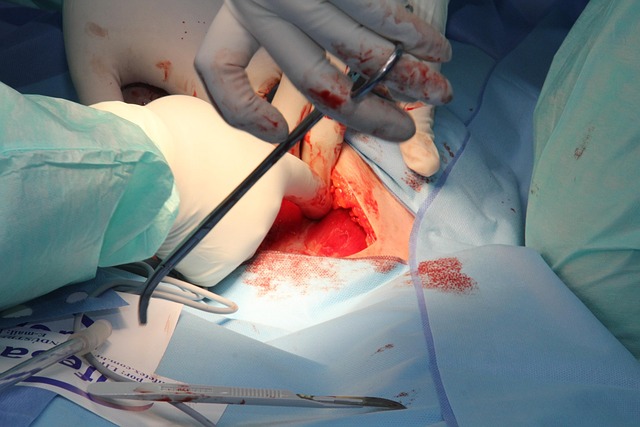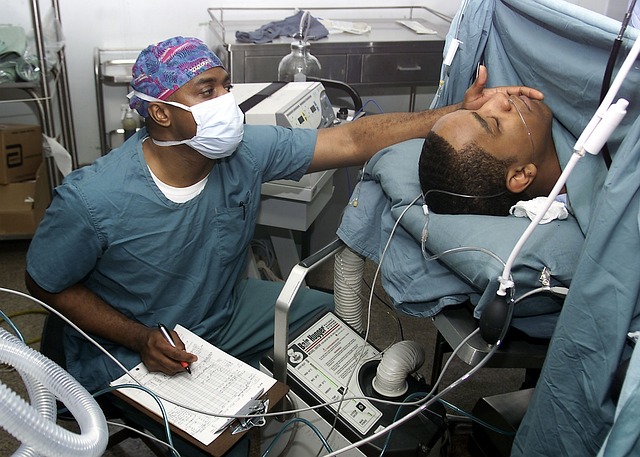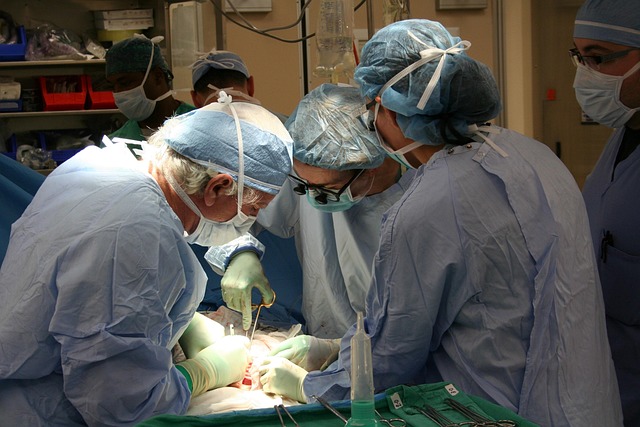Translation services for surgical procedure instructions in the UK are essential for ensuring patient safety and accurate medical communication, given the critical nature of precise medical terminology and cultural sensitivity. Professional translators with healthcare expertise navigate complex medical language and cultural nuances to produce reliable, compliant translations that meet industry standards. Rigorous quality assurance processes, including expert review and feedback mechanisms, ensure accuracy and mitigate risks associated with miscommunication during life-critical surgeries. Engaging these services is crucial for hospitals, clinics, and medical device manufacturers to enhance care quality, avoid legal repercussions, and maintain the highest safety standards in diverse linguistic landscapes.
In the realm of modern healthcare, ensuring precision in translated surgical procedures is paramount. With global patient populations growing, effective communication becomes a intricate dance. This article delves into the critical importance of accuracy in surgical translations, exploring challenges from medical language complexities to cultural nuances. We examine the pivotal role of professional translation services and key technical considerations. Learn about quality assurance, regulatory compliance, and successful case studies of translated surgical procedures in the UK, highlighting the significance of expert medical translation services for safe and effective patient care.
- Understanding the Significance of Precision in Surgical Translations
- Challenges in Translating Medical Language
- The Role of Professional Translation Services
- Ensuring Cultural Sensitivity and Accuracy
- Technical Considerations for Surgical Instructions
- Quality Assurance Processes in Translation
- Regulatory Compliance and Legal Implications
- Case Studies: Successful Surgical Procedure Translations in the UK
Understanding the Significance of Precision in Surgical Translations

Precision is paramount when it comes to surgical translations, especially in the context of global healthcare. In a field where even minor errors can have severe consequences, accurate and reliable translation services for surgical procedure instructions are essential. When medical professionals rely on translated documentation, such as operation manuals, patient information sheets, or post-operative care guides, they must be confident that the language used directly reflects the intended medical procedures.
In the UK, where healthcare standards are renowned worldwide, ensuring precision in surgical translations is more than a quality control measure; it’s a matter of public safety. Translation services specializing in medical literature and procedure instructions play a crucial role in facilitating effective communication across diverse linguistic backgrounds. These services employ experts who not only grasp the intricacies of medical terminology but also understand the cultural nuances that may impact how medical concepts are conveyed, ensuring that surgical procedures are communicated clearly and consistently to healthcare providers and patients worldwide.
Challenges in Translating Medical Language

Translating medical language, especially for surgical procedures, presents unique challenges due to its highly technical nature and specific terminology. When it comes to translation services for surgical procedure instructions in the UK, precision is paramount. A single misinterpretation can have severe consequences during surgery, leading to potential risks for patients and legal implications for healthcare providers.
Medical texts often require a deep understanding of anatomical structures, complex procedures, and specialized terminology. Language nuances and cultural differences must also be considered. For instance, certain medical terms might not have direct equivalents across languages, making accurate translation a delicate task. Therefore, professional translators with expertise in medicine and fluency in both source and target languages are essential to ensure the safety and effectiveness of surgical instructions during international patient care.
The Role of Professional Translation Services

In the healthcare sector, precision is paramount, especially when it comes to surgical procedures. When medical professionals need to share complex information across languages, relying on standard translation services isn’t sufficient. This is where professional translation services for surgical procedure instructions in the UK step in, offering specialised expertise and a deep understanding of medical terminology.
These services employ highly qualified translators with extensive experience in healthcare who can accurately convey intricate medical concepts while adhering to linguistic nuances and cultural sensitivities. By ensuring that every detail is translated precisely, these professionals help reduce errors, improve patient safety, and enhance the overall quality of care. Using advanced technologies and industry-specific glossaries, they deliver translations that are not just word-for-word but conceptually accurate, making them indispensable for hospitals, clinics, and medical device manufacturers in the UK.
Ensuring Cultural Sensitivity and Accuracy

When translating surgical procedure instructions, cultural sensitivity and accuracy are paramount. Medical translations must convey not just the literal meaning of procedures but also consider cultural nuances and local practices. For instance, certain medical terms or concepts might have different connotations or even be unfamiliar in other languages. Professional translation services for surgical procedures in the UK employ linguists who specialize in medicine and have a deep understanding of their target cultures. This ensures that translated instructions are both precise and culturally appropriate, avoiding potential misunderstandings that could impact patient safety.
Moreover, effective translation goes beyond words; it involves adapting visual elements and formatting to be universally comprehensible. This includes ensuring that diagrams, illustrations, and medical terminology used in the original text are accurately represented in the translation. Reliable UK-based surgical procedure translation services invest in state-of-the-art tools and maintain robust quality control measures to guarantee the highest level of accuracy, making critical medical information accessible and understandable across diverse linguistic landscapes.
Technical Considerations for Surgical Instructions

When translating surgical procedures, precision is paramount to ensure patient safety and successful outcomes. Medical jargon and nuanced terminology require careful handling to maintain the accuracy of instructions. Translation services for Surgical Procedure Instructions UK should employ experienced linguists with a strong medical background to navigate these complexities. They must understand not only the language but also the cultural nuances and specific medical terminology to deliver precise translations.
Technical considerations include adhering to standardized medical terminology, ensuring consistency in labeling, and capturing the exact meaning of surgical steps. Advanced translation tools can aid in this process, but human expertise remains indispensable for nuanced adjustments. Accurate translations are critical to avoid misunderstandings, miscommunications, or worse, during surgeries where every detail counts.
Quality Assurance Processes in Translation

In the realm of medical translation, ensuring precision is paramount, especially when it comes to surgical procedures. Translation services for Surgical Procedure Instructions in the UK must adhere to stringent Quality Assurance (QA) processes to maintain accuracy and safety. These QA measures involve multiple layers of review by expert translators and medical professionals who scrutinize every detail, from terminology to context, to guarantee that the translated instructions are not only correct but also culturally appropriate and easily understandable for the target audience.
The process typically includes pre-translation planning, where terminologies and concepts specific to surgery are meticulously defined and aligned with industry standards. This is followed by the translation phase, where professional translators with medical backgrounds render the content into the target language while preserving its technical integrity. Post-translation, rigorous quality checks, including proofreading and editing, ensure that any potential errors or ambiguities are resolved. Moreover, client feedback mechanisms and ongoing training for translators further enhance the overall QA process, making it a comprehensive and robust framework to deliver precise surgical procedure instructions.
Regulatory Compliance and Legal Implications

The accuracy of translated surgical procedure instructions is paramount, not only for effective patient care but also to navigate regulatory compliance and legal implications. In the UK, medical translation services are strictly regulated to maintain quality and safety standards. Translation companies must adhere to guidelines set by bodies like the Care Quality Commission (CQC) and comply with relevant legislation such as the Marketing of Medical Devices Regulations 2007. Any deviation from these standards could lead to legal consequences, including fines and reputational damage for both the translation provider and the original medical institution.
When translating surgical procedure instructions, it’s crucial to engage professional translators with expertise in medical terminology and procedures. They must possess a deep understanding of both the source and target languages to convey complex medical concepts accurately. Additionally, these translators should be familiar with cultural nuances to ensure the translated instructions are easily understandable and culturally appropriate for healthcare providers and patients. Failure to meet these requirements could result in miscommunication, incorrect treatment, and potential harm to patients, which has severe legal ramifications.
Case Studies: Successful Surgical Procedure Translations in the UK

In the UK, the importance of precise translations in surgical procedures has been highlighted through numerous successful case studies. Hospitals and medical centres have increasingly relied on professional translation services for surgical procedure instructions to ensure accurate communication between healthcare providers and patients from diverse linguistic backgrounds. These translations cover a wide range, including pre-operative assessments, post-operative care guidelines, and detailed step-by-step procedures for various surgeries.
One notable example involves a leading hospital in London that successfully translated and implemented surgical guides for a new surgical technique from a European language. The accuracy of the translation was critical to the success of the procedure, as it involved intricate steps that required precise communication. Through rigorous quality assurance processes, the translation services ensured that medical terminology was conveyed exactly, minimising potential risks during the operation. This case study underscores the crucial role that professional translation plays in facilitating successful surgical outcomes and improving patient care in multicultural healthcare settings within the UK.
Precision in translated surgical procedures is paramount to ensuring patient safety and effective healthcare delivery. As medical language and cultural contexts evolve, relying on professional translation services becomes increasingly vital. By adhering to strict quality assurance processes and prioritizing cultural sensitivity, these services facilitate accurate communication of surgical instructions within the UK’s healthcare landscape. Translation services for Surgical Procedure Instructions UK must navigate technical nuances and regulatory compliance to provide indispensable support for a successful and secure patient care experience.
